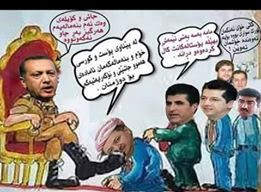Cruel inhumane treatment of children is a sign that this woman has suffered from strong misopedia.
#stop_violence_against_children
Why do racists attack children based on ethnicity or skin color or religion?
There are two reasons why this woman seen in the film has two types of mental illness: one is a sadist, a molester, a misopedia, a duke. Or she is racist .
Strategies that have proven their effectiveness are: enforcing the law; changing social norms and values; creating a safe environment; supporting the parents and caregivers; economic advancement and supporting a higher income; availability of services to provide response and support; education and the promotion of ...How can we stop violence in children?
In addition, the following strategies can lessen or prevent violent behavior:
Prevention of child abuse (use of programs such as parent training, family support programs, etc.)
Sex education and parenting programs for adolescents.
Early identification and intervention programs for violent youngsters.
Violent Behavior in Children and Adolescents
There is a great concern about the incidence of violent behavior among children and adolescents. This complex and troubling issue needs to be carefully understood by parents, teachers, and other adults.
Children as young as preschoolers can show violent behavior. Parents and other adults who witness the behavior may be concerned, however, they often hope that the young child will "grow out of it." Violent behavior in a child at any age always needs to be taken seriously. It should not be quickly dismissed as "just a phase they're going through!"
Range of Violent Behavior
Violent behavior in children and adolescents can include a wide range of behaviors: explosive temper tantrums, physical aggression,, fighting, threats or attempts to hurt others (including thoughts of wanting to kill others), use of weapons, cruelty toward animals, fire setting, intentional destruction of property and vandalism.
Factors Which Increase Risk of Violent Behavior
Numerous research studies have concluded that a complex interaction or combination of factors leads to an increased risk of violent behavior in children and adolescents. These factors include:
Previous aggressive or violent behavior
Being the victim of physical abuse and/or sexual abuse
Exposure to violence in the home and/or community
Being the victim of bullying
Genetic (family heredity) factors
Exposure to violence in media (TV, movies, etc.)
Use of drugs and/or alcohol
Presence of firearms in home
Combination of stressful family socioeconomic factors (poverty, severe deprivation, marital breakup, single parenting, unemployment, loss of support from extended family)
Brain damage from head injury
What are the "warning signs" for violent behavior in children?
Children who have several risk factors and show the following behaviors should be carefully evaluated:
Intense anger
Frequent loss of temper or blow-ups
Extreme irritability
Extreme impulsiveness
Becoming easily frustrated
Parents and teachers should be careful not to minimize these behaviors in children.
What can be done if a child shows violent behavior?
Whenever a parent or other adult is concerned, they should immediately arrange for a comprehensive evaluation by a qualified mental health professional. Early treatment by a professional can often help. The goals of treatment typically focus on helping the child to: learn how to control his/her anger; express anger and frustrations in appropriate ways; be responsible for his/her actions; and accept consequences. In addition, family conflicts, school problems, and community issues must be addressed.
Can anything prevent violent behavior in children?
Research studies have shown that much violent behavior can be decreased or even prevented if the above risk factors are significantly reduced or eliminated. Most importantly, efforts should be directed at dramatically decreasing the exposure of children and adolescents to violence in the home, community, and through the media. Clearly, violence leads to violence.
In addition, the following strategies can lessen or prevent violent behavior:
Prevention of child abuse (use of programs such as parent training, family support programs, etc.)
Sex education and parenting programs for adolescents
Early identification and intervention programs for violent youngsters
Monitoring child's viewing of violence during their screen time including the Internet, tablets, smartphones
How can we end violence against children?
Strategies that have proven their effectiveness are: enforcing the law; changing social norms and values; creating a safe environment; supporting the parents and caregivers; economic advancement and supporting a higher income; availability of services to provide response and support; education and the promotion of ..
.In a large part of European countries, violence against children is legal and government agencies plan to abuse children. What is written in their books is only a superficial aspect, and behind the scenes, they inflict on children everything that is far from humane and inhumane.
What are the 7 strategies to end violence against children?
The seven strategies are: Law Implementation and Enforcement; Norms and Values; Safe Environments; Parent and Caregiver Support; Income and Economic Strengthening; Response and Support Services; and Education and Life Skills.
STOP violence against children
Every child has the right to protection from all forms of violence
The challenge
Violence against children is a phenomenon that exists in every country, community, ethnic or religious group, irrespective of the social status of the child or the family. It happens everywhere: at home, at the kindergarten, out in the street, among friends, in child care facilities, at law enforcement institutions, etc. Children become victims to different forms of violence and abuse: physical, psychological, sexual, bullying, online, neglect, trafficking, sexual and labor exploitation, or arranged child marriages.
Violence impacts the physical and mental development of children, reducing their learning skills, their ability for verbal interaction or for joining peer groups.
Violence may hinder their development and prevent them from becoming fully functional adults and good parents. In its extreme forms, violence can even cause death.
According to data from the Agency for Social Assistance, in 2016 the child protection departments have received 3,158 alerts of violence and opened 681 cases. Over 4,200 incidents involving aggression against children have been recorded in the schools during the 2014/2015 academic year.
Since the adoption of the Child Protection Act in 2000, Bulgaria has been developing a child protection system that deals with prevention, identification of, and response to, violence against children. Corporal punishment is prohibited under the Child Protection Act, the Family Code (2009) and the Pre-school and School Education Act (2015). In February 2017, the Council of Ministers approved a National Program for the Prevention of Violence and Abuse of Children, however violence against children continues to be a serious problem.
A large portion of the incidents, however, remain hidden from view as public’s attitudes still tolerate moderate forms of corporal punishment of children – almost






















.jpg)






































Inga kommentarer:
Skicka en kommentar